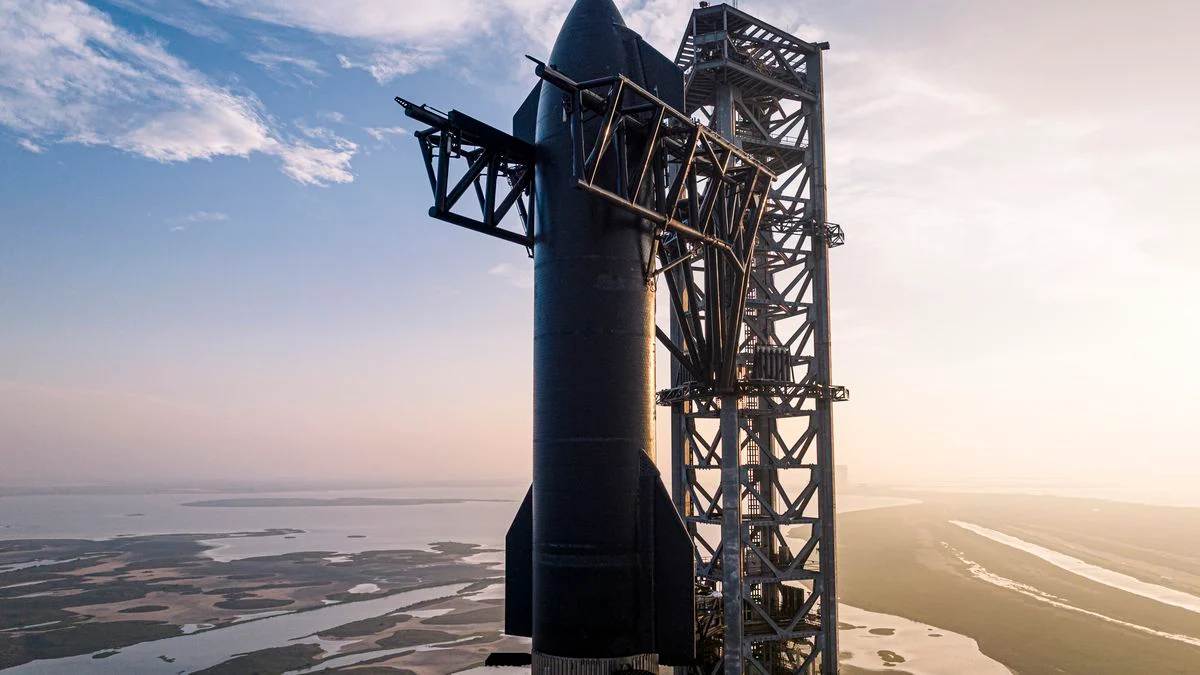SpaceX has set its next Starship test flight for November 18, following a series of incremental improvements since its previous test in October.
On November 6, the company confirmed that it would conduct the sixth integrated Starship/Super Heavy flight from its Starbase facility at Boca Chica, Texas, targeting the afternoon of November 18. This announcement coincided with the Federal Aviation Administration (FAA) releasing airspace restrictions for the upcoming flight attempt.
SpaceX stated that the primary goal of this flight is to further test the capabilities of the Starship and Super Heavy booster, with the aim of progressing toward the reuse of the entire system. Like the flight on October 13, this mission will follow a similar suborbital profile, which includes an attempt to recover the Super Heavy booster through a "catch" by the launch tower.
This mission will feature several key changes. One of the highlights is the relighting of a Raptor engine on Starship during flight, intended to demonstrate the ability to perform a deorbit burn in future orbital missions. This test was initially planned for Starship’s third flight in March but was not conducted due to the vehicle's roll rates.
Another focus of the upcoming flight will be testing updates to Starship’s thermal protection system. According to SpaceX, the flight will assess new secondary thermal protection materials, and some sections of heat shield tiles will be removed on either side of the ship, where future catch-enabling hardware will be installed. SpaceX envisions using the launch tower’s "catch" method to recover both Starship and the Super Heavy booster in the future.
Additionally, Starship will approach its final descent at a higher angle of attack, intentionally pushing the limits of flap control to gather data on potential landing profiles for future missions.
In order to collect better data during reentry, SpaceX has also adjusted the launch time for this mission. Unlike previous morning launches from Starbase, this flight is scheduled for a 30-minute window that opens at 5 p.m. Eastern. This timing ensures that Starship's splashdown will occur during daylight hours in the Indian Ocean, unlike previous night-time splashdowns.
SpaceX has made further adjustments to the Super Heavy booster as well. The company has added extra redundancy to the booster’s propulsion system, reinforced structural strength in key areas, and reduced the time needed to remove propellants after its return. Engineers have also updated software controls and launch/return criteria for the booster.
In an audio recording released by SpaceX CEO Elon Musk on October 25, SpaceX officials revealed that during the previous Super Heavy catch attempt, they came within one second of aborting due to a “misconfigured” parameter related to the booster’s Raptor engines. They acknowledged that the catch attempt included numerous new abort and commit criteria that hadn’t been fully reviewed prior to launch, but after analyzing the flight data, they were able to identify the necessary changes.
If the flight proceeds on schedule, it will mark the fastest turnaround between Starship/Super Heavy test flights, with just over five weeks separating this launch from the fifth flight in October. This rapid pace is possible because the FAA license granted for the fifth flight also covers the sixth flight.
“The SpaceX Starship/Super Heavy Flight 5 license authorization also includes FAA approval for the Flight 6 mission profile,” the FAA stated in its October 12 announcement. “The FAA determined that the changes SpaceX requested for Flight 6 are within the scope of what has already been analyzed.” The agency did not disclose the specific changes that SpaceX had requested at that time.


